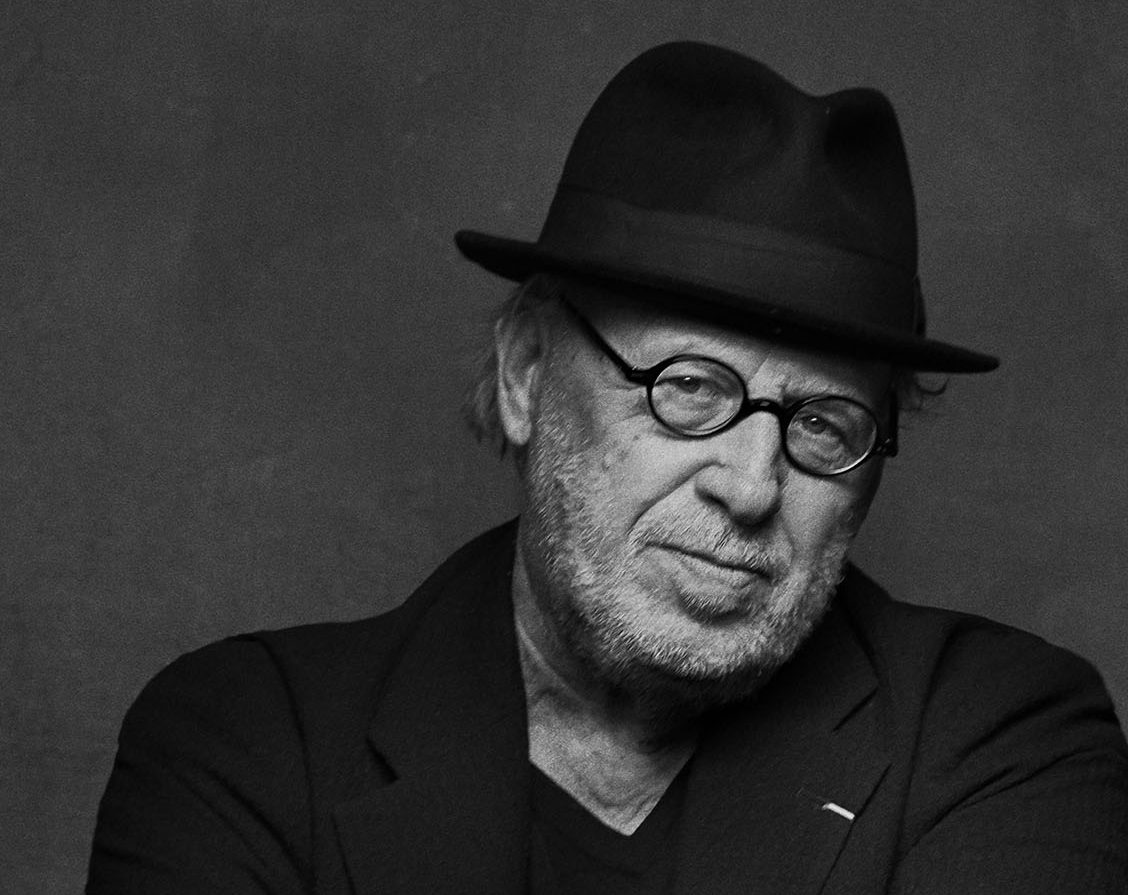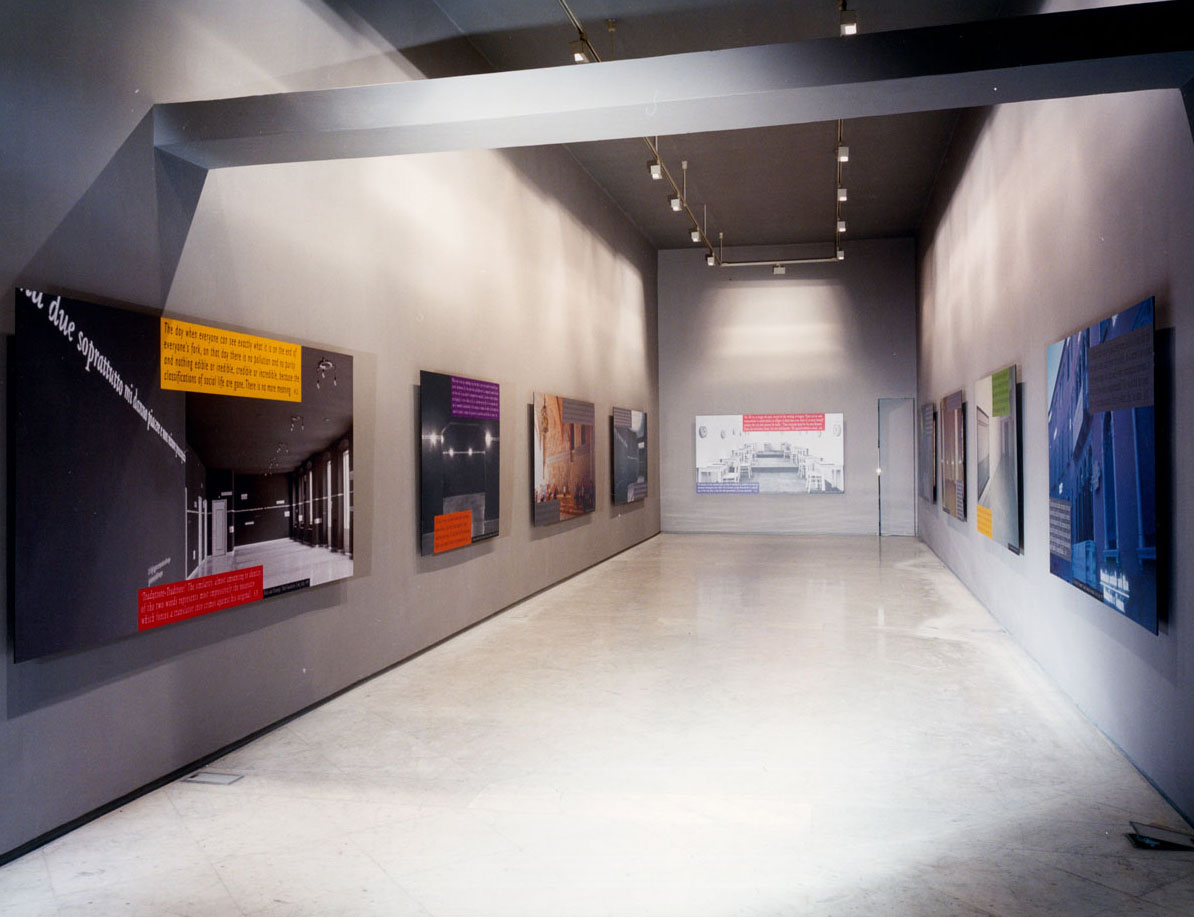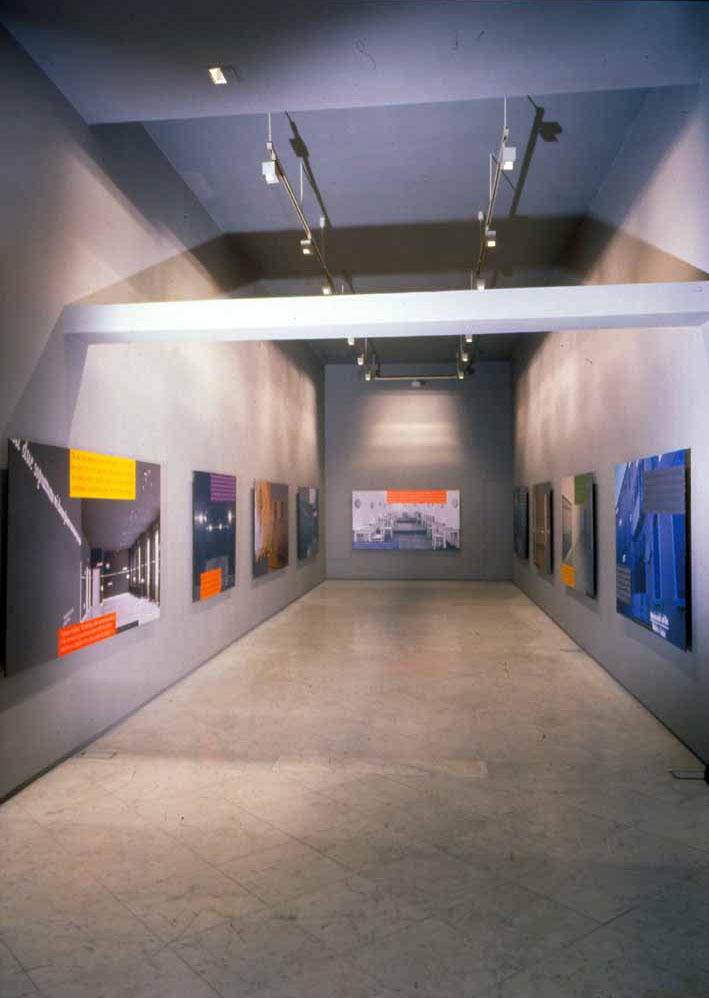Lia Rumma Gallery presents a joint project designed by Joseph Kosuth. The exhibition in Naples followed shortly by a second one in the Milan gallery. The Gallery would like the exhibition to mark the transition to a new millennium, by entrusting to the artist the role of intermediary between the two galleries and the changeover from this century to the one about to begin. It was with an exhibition by Kosuth, then a promising young artist in the United States, that Lia Rumma inaugurated the first gallery in Naples in 1971. This exhibition, therefore, intends to stress the continuity and coherence both in terms of direction and choices that have characterized a journey which, through a series of important stages, has led from the first beginnings in Naples to the recent developments marked by the inauguration of a second gallery.
Kosuth is one of the most representative exponents of conceptual art and author, from the sixties onwards, of critical essays as well as the organizer of some of the first events associated with the movement. He explores the relationship between art, language and philosophy, and between an object and its definition, and his work has been characterized from the very beginning by emotional detachment and the abandonment of any formal or expressive anxiety. He defines his art as “conceptual” in the sense that it is founded on the “linguistic understanding of all artistic positions, both past and present, regardless of the elements used for their construction”. His first works are tautological and far removed from autobiographical intentions: they include, in many cases, objects presented beside a photo of the same object and its definition is taken from a dictionary, presented in an entirely impersonal way. His work subsequently moved towards a deeper interest in context.
Mostra personale
Joseph Kosuth

Photo Gallery
L'artista

Joseph Kosuth (b 1945, USA) is one of the pioneers of Conceptual art and installation art, initiating language based works and appropriation strategies in the 1960s. His work has consistently explored the production and role of language and meaning within art. His more than fifty year inquiry into the relation of

